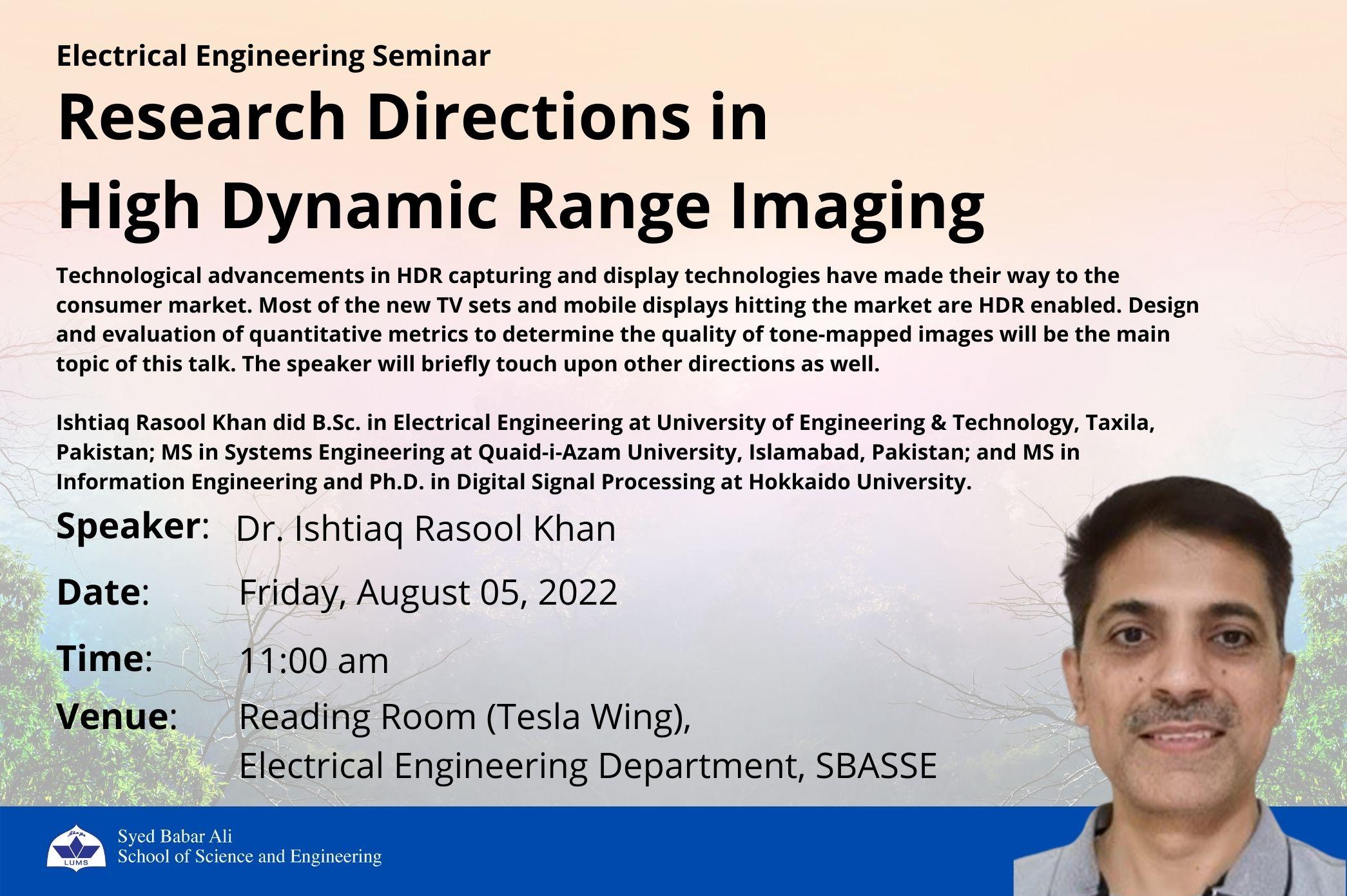
Event date:
Aug
5
2022
11:00 am
Some Research Directions in High Dynamic Range Imaging
Speaker(s)
Dr Ishtiaq Rasool Khan
Venue
EE Reading Room, 2nd floor, SBASSE
Abstract
Real-world scenes have a much larger dynamic range (ratio of maximum to minimum luminance) than what can be stored in traditional image formats and shown on common display screens. High dynamic range (HDR) imaging, which can capture these scenes more accurately than conventional imaging techniques, has gained popularity in recent years. Technological advancements in HDR capturing and display technologies have made their way to the consumer market. Most of the new TV sets and mobile displays hitting the market are HDR enabled. Production of HDR content has also gained pace, and many modern cameras allow HDR photography.
Major research directions in HDR imaging include (1) Capturing HDR images/video, (2) Visualization of HDR images on HDR and existing low dynamic range (LDR) screens, (3) Encoding HDR data, (4) Distribution of HDR content, (5) Evaluation of HDR tone-mapped images, and (6) Design and evaluation of quantitative metrics to determine the quality of tone-mapped images. The last (#6) will be the main topic of this talk, however, we will briefly touch upon other directions as well.
Major research directions in HDR imaging include (1) Capturing HDR images/video, (2) Visualization of HDR images on HDR and existing low dynamic range (LDR) screens, (3) Encoding HDR data, (4) Distribution of HDR content, (5) Evaluation of HDR tone-mapped images, and (6) Design and evaluation of quantitative metrics to determine the quality of tone-mapped images. The last (#6) will be the main topic of this talk, however, we will briefly touch upon other directions as well.
Ishtiaq Rasool Khan did B.Sc. in Electrical Engineering at University of Engineering & Technology, Taxila, Pakistan; MS in Systems Engineering at Quaid-i-Azam University, Islamabad, Pakistan; and MS in Information Engineering and Ph.D. in Digital Signal Processing at Hokkaido University. He has worked at Hokkaido University, Japan; University of Kitakyushu, Japan; Kyushu Institute of Technology, Japan; Institute for Infocomm Research, A*STAR, Singapore; and King Abdulaziz University, KSA, in the past. Currently, he is a professor at the College of Computer Science and Engineering, University of Jeddah. His current research interests include high dynamic range image/video processing, medical image enhancement, and data clustering.

